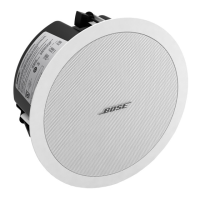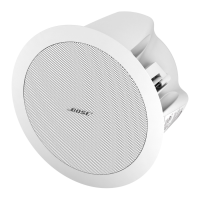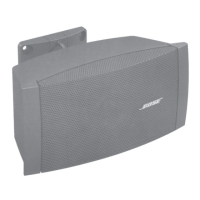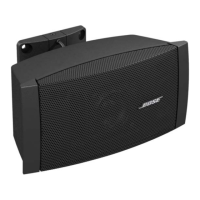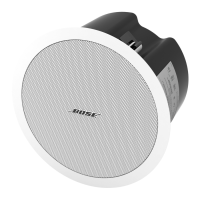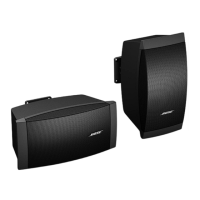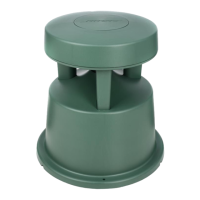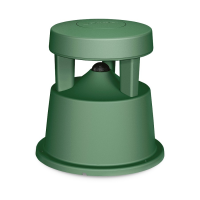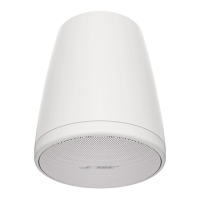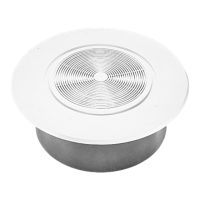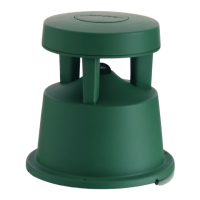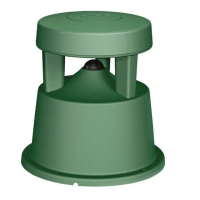28
TEST PROCEDURES
FreeSpace
®
DS 40F Flush-Mount Loud-
speaker, 70/100V Version (continued):
2. Rub and Tick Test
2.1 Remove the loudspeaker grille using
disassembly procedure 1. Set the TAP
rotary switch to the 8 Ohm position.
2.2 Apply a 9 Vrms, 30 Hz signal to the
8 Ohm input of the loudspeaker.
2.3 Listen to the drivers for any rubbing,
ticking or other extraneous noise. Replace
any defective driver. Small ticks are accept-
able if they cannot be heard at a distance of
one foot.
Note: There is a normal suspension noise.
To distinguish between a rub or a tick and
suspension noise, displace the cone slightly
with your finger. If the rubbing can be made
to go away or get worse, it is a rub or a tick.
If the noise stays the same, it is suspension
noise.
3. Power Sweep Test
3.1 Remove the loudspeaker grille using
disassembly procedure 1. Set the TAP rotary
switch to the 8 Ohm position.
3.2 Apply a 12.75 Vrms, 75 Hz signal to the
8 Ohm input of the loudspeaker.
3.3 Slowly sweep the oscillator frequency
from 60 Hz to 5 kHz. Listen for any buzzes,
rattles or other extraneous noises from the
drivers or from the internal parts. Test sweep
time should be about 3 seconds up and 3
seconds down. Replace any driver that has
a buzzing noise.
Note: The whooshing noise from the port at
around 75Hz is acceptable.
4. Transformer TAP Select Test
4.1 Apply a 70 Vrms, 100 Hz signal to the
70/100V loudspeaker input.
4.2 Slowly change the TAP selection switch
from the 40W position to the 2.5W position.
A decrease in audio output level should be
heard for each descending TAP position of
the switch.
